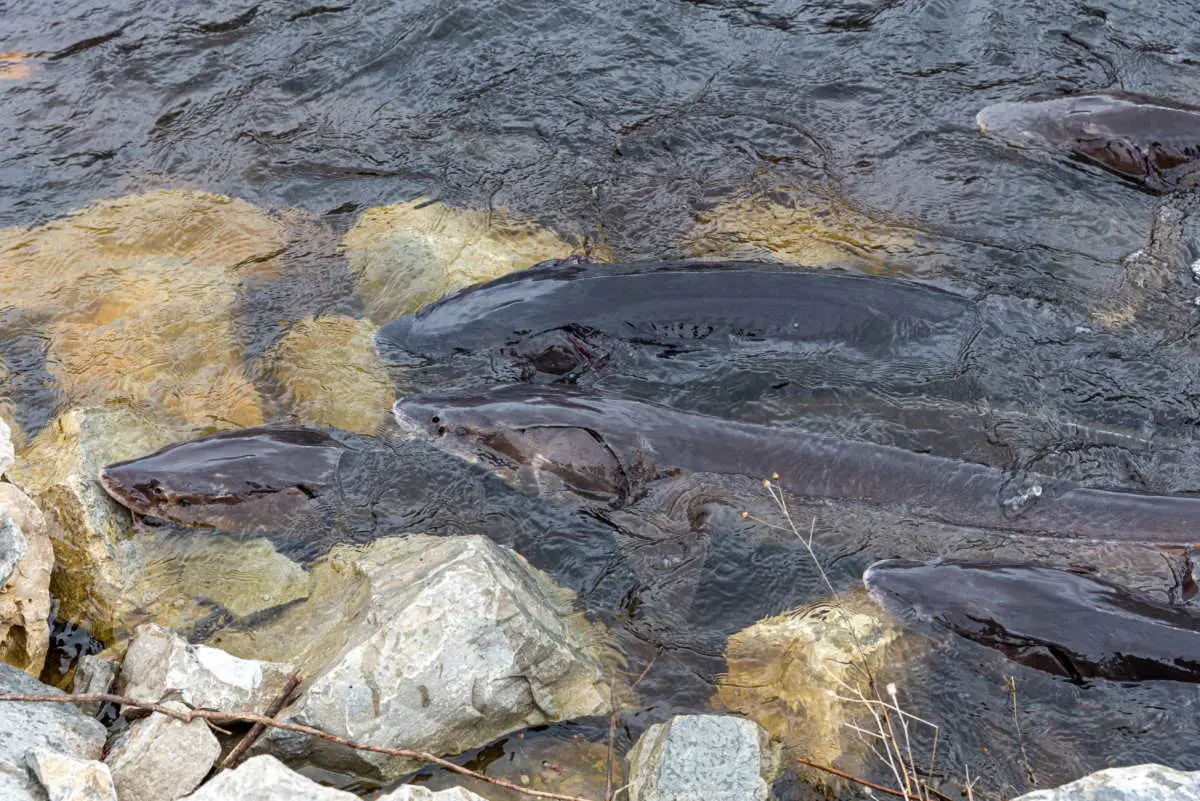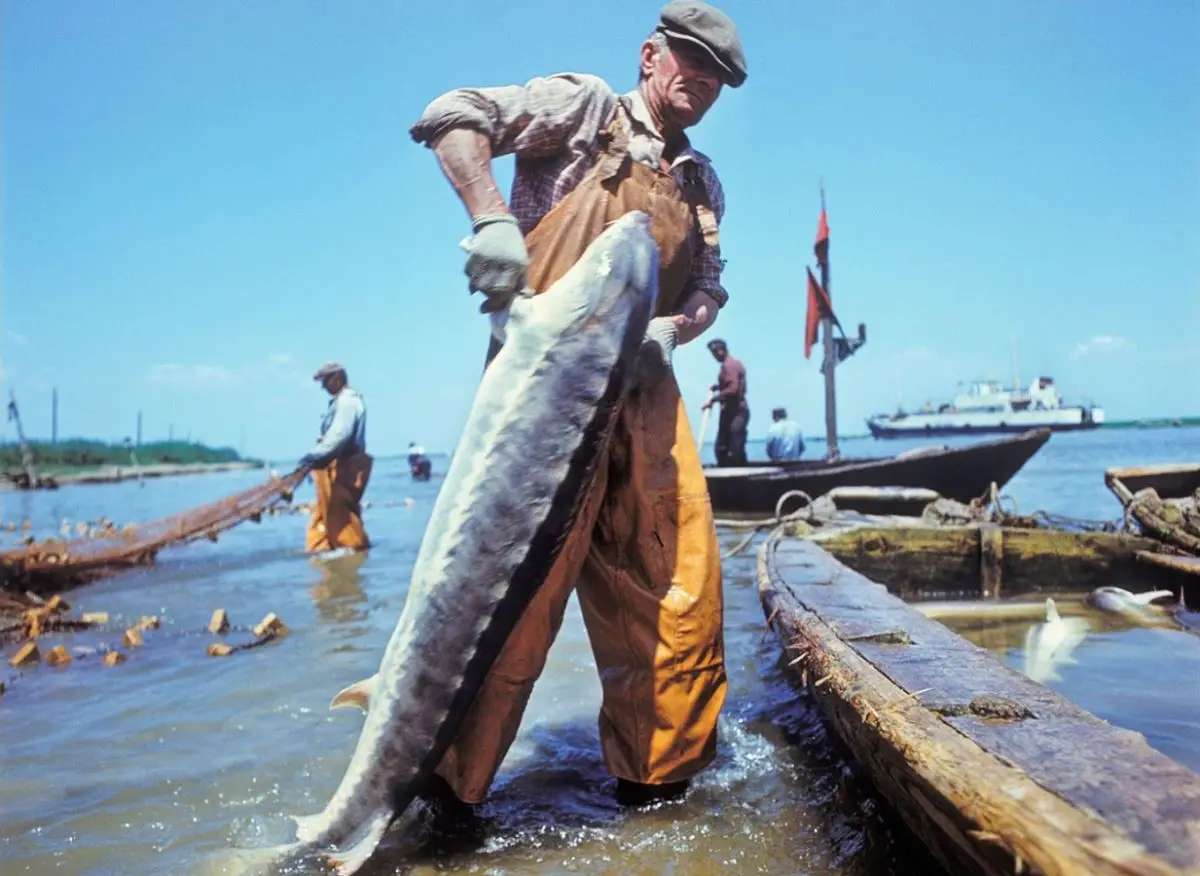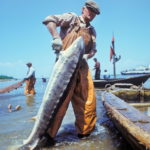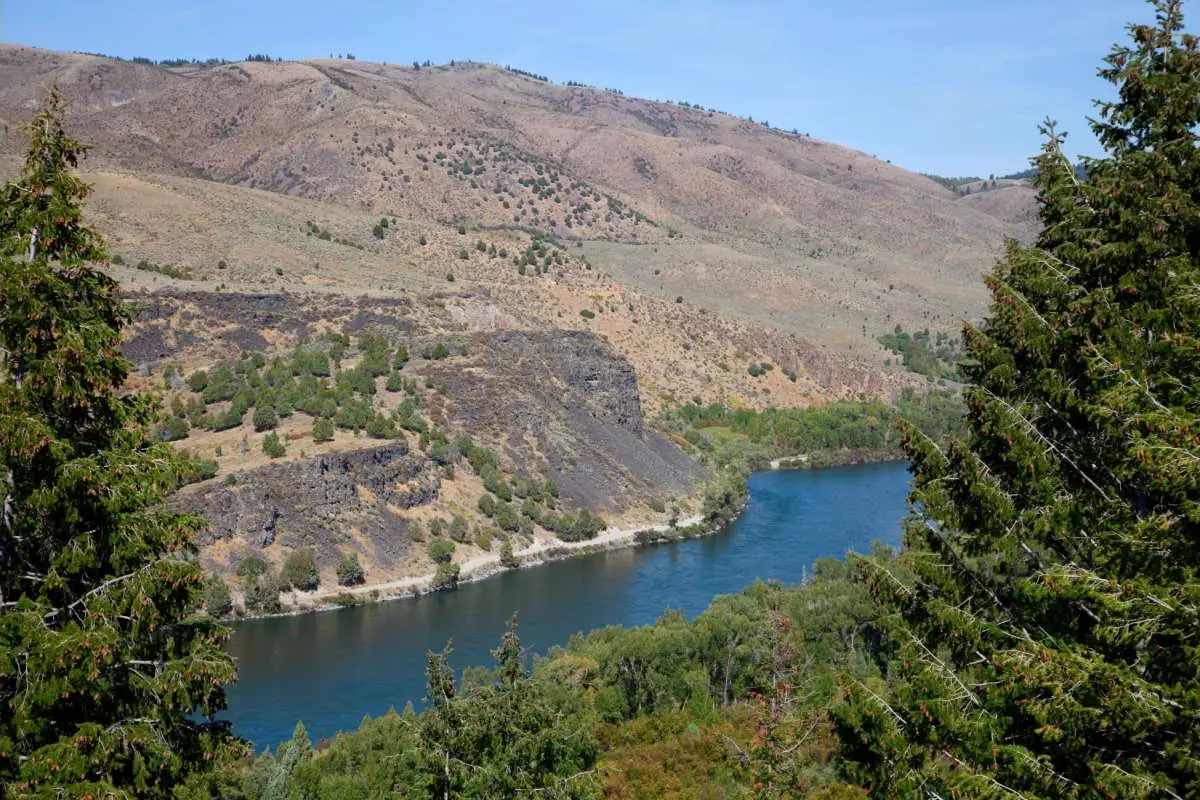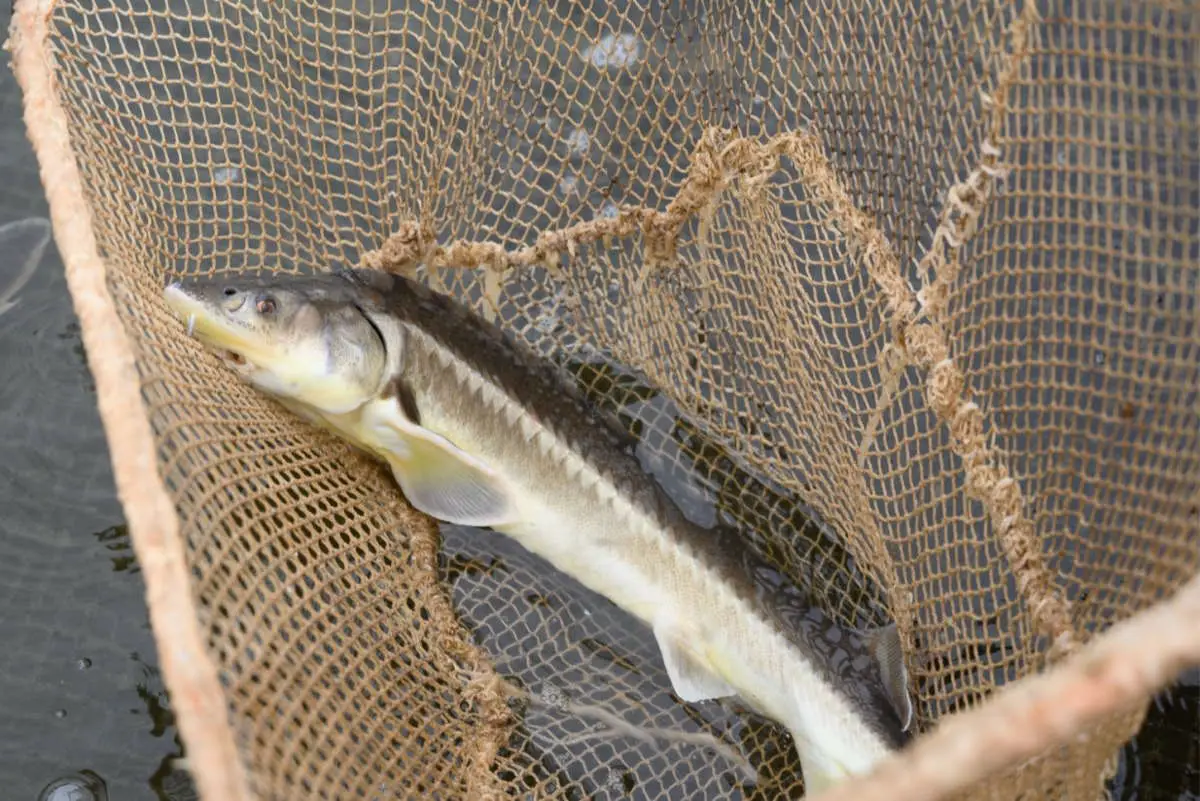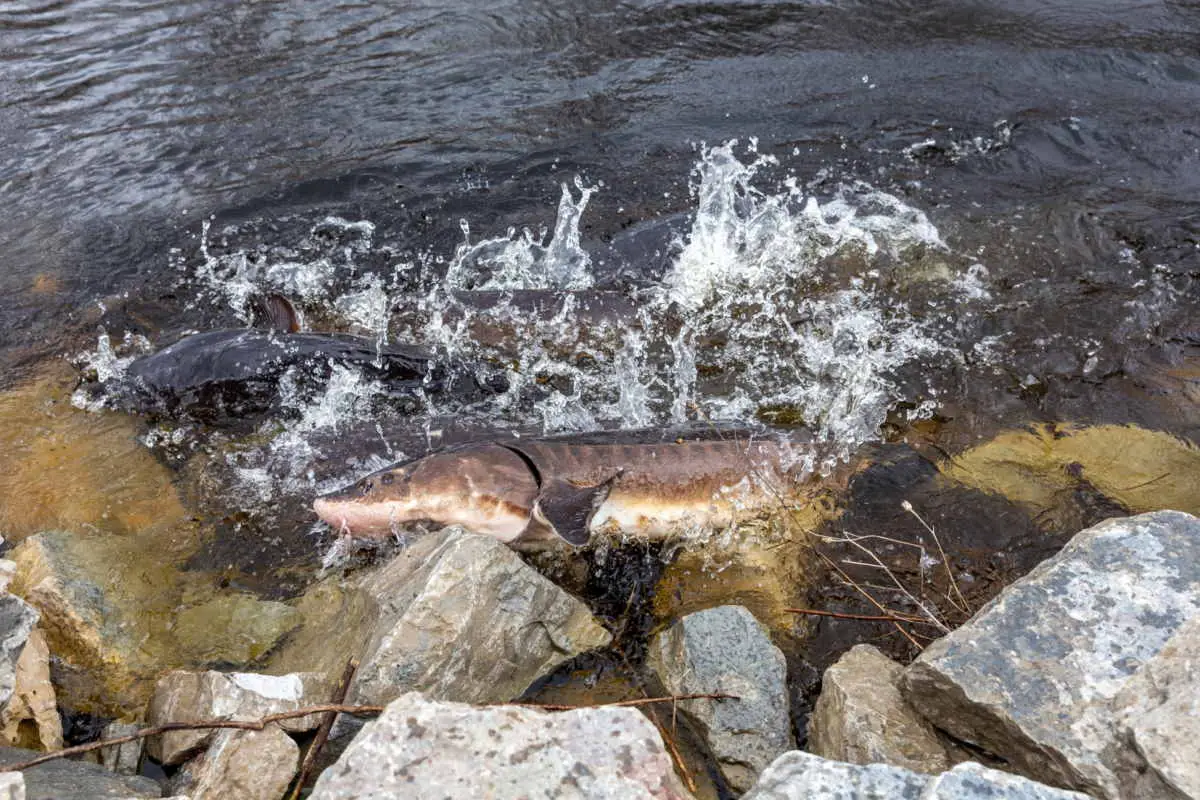Spawning sturgeon is a natural process that has been occurring since the dinosaurs. For centuries, sturgeon have been an important part of our ecosystem and many other ecosystems around the world.
This article will cover everything you need to know about sturgeon spawning including where they spawn, how they spawn, and when sturgeon spawn.
What Is Sturgeon Spawning?
Spawning, in sturgeon terms, is when sturgeon release their eggs and sperm into the water in order to reproduce.
Spawning, for surgeons occurs, typically upstream from where they spend most of their lives. It is a natural process that has been occurring since the dinosaurs were roaming our earth. For centuries sturgeon have been an important part of many ecosystems.
Where Do Sturgeon Spawn?
Sturgeons will spawn in a variety of habitats but prefer rivers and streams with gravel bottoms. They also prefer backwaters, off the main channel of a river.
In some larger rivers and water systems where there are large dams, the fish will spawn in the rocky back eddies as close to the dam as possible.
It is believed by fish biologists that sturgeon like this location because of low sediment and high oxygen content in the water.
How Do Sturgeon Spawn?
Sturgeon are oviparous, meaning that they lay eggs instead of giving live birth. Females release their eggs into the water from the underside of their body at the same time as males release semen, fertilizing the eggs.
The eggs will then sink and stick to rocks or other objects on the bottom. If the eggs are covered by dirt or sand they will die. Sturgeon eggs hatch after about 3 days in warmer climates and about 10 days in colder climates
When Does Sturgeon Spawning Occur?
Sturgeon spawning occurs in late spring, typically in May. However, this is very dependent on water temperature, flow, location, and exact species.
In a normal flow or high flow year, sturgeon will spawn at a lower temperature, sometimes around 53 degrees. In years with low flow or drought, they will wait for the temperature to rise above 58 degrees.
It is thought that this gives the young sturgeon the best chance of survival. Also, the temperature range will vary depending on the average temperatures of the sturgeon’s home waters.
How Old Are Sturgeon When They Start Spawning?
Female sturgeon will start to spawn when they are around 20 years old. After their first spawn, they will spawn again every 6 years, however, this can be sooner or later depending on factors such as food supply and habitat conditions.
Male sturgeon normally start spawning when they are around 10 years old. Normally they will spawn every other year but can go many years between spawning if conditions are poor. Poor conditions can include low food supply, drought, or bad water temperatures.
Can Sturgeons Be Raised in a Hatchery?
Sturgeon are raised in hatcheries around the world, some to help increase populations and others for commercial production of caviar and their meat.
Most hatcheries are run in cooperation between state fish and wildlife departments and local native tribes in the US. The fish are caught, spawned by a hand push process, tagged, and released back into the river.
Most egg and sperm collection happens at the shore of the river where the fish live. this is because of the difficulty transporting such large fish and the to safely released back into the wild. Some sturgeon do get transported to the hatchery, but they are traditionally the first to spawn young fish that are of the smaller size.
The fertilized eggs are then taken to the hatchery to be raised. Once the fish enter the juvenile size range they will be tagged and released into the area they were originally collected.
Commercial hatcheries are run differently. They keep the sturgeon in large ponds and raise them until they a spawning age. This occurs fast because of perfect food levels and water conditions.
When the female fish reach maturity they will be harvested for their meat and eggs. Some of the eggs will be fertilized to continue the operation, but most will be processed into caviar.
Can We Create Spawning Areas for Sturgeon?
Sturgeon spawn at a variety of different locations. Therefore, sturgeon spawning areas are difficult to create. However, after 1990 sturgeon researchers have learned a lot including how and where to spawning beds to replace lost habitat.
These sturgeon spawning beds require a stony base that is free of fine sand or dirt. Ideally, steady moving water to reduce predators and increase oxygen content will indicate a perfect area.
Check out this video
Where Can You See Sturgeon Spawn?
In the wild most sturgeon spawn below the surface however, there are a few places where they are visible. Lake sturgeon like to move into streams where the bottom is free of dirt and sand so this can be a good place to observe them spawn.
Another place you can see spawning sturgeons is below a waterfall or rapids where there are woody rocks on either side. These create excellent egg and sperm collection areas for biologists to monitor and study sturgeon spawning behavior.
If you do find a sturgeon spawning bed they are not particularly scared by humans. You can watch them closely but stay out of their way. interfering with fish spawning is a crime in many places.
Some hatcheries have viewing areas for the general public while others allow volunteers to work with the fish first hand.
Here is a video
FAQ
What is sturgeon caviar?
Caviar refers to sturgeon eggs that have been processed and eaten as a delicacy. The sturgeons are typically killed for their meat, but the females can be harvested for their roe or egg sacs instead of being slaughtered whole.
There are two types of caviar – black and red. Red caviar will come from sturgeon that produce whiter eggs in general while black usually comes from sturgeons with darker colored eggs like grayling sturgeon. Other differences in taste between these varieties depend on what type of fish was used to create them (usually salmon).
